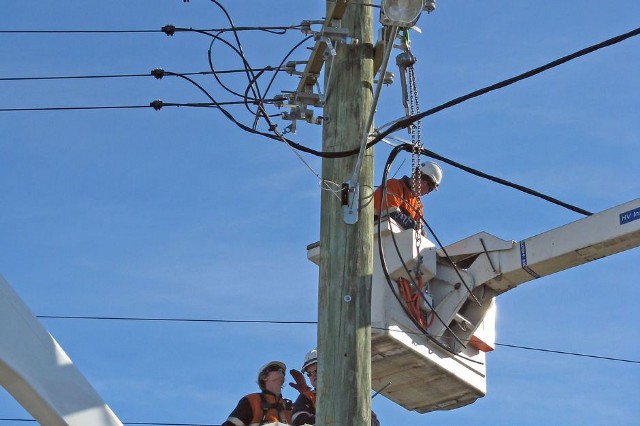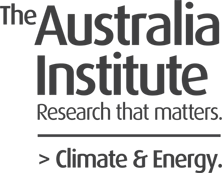How consumers could cash in from the National Energy Market using Demand Response
The Australia Institute, Total Environment Centre, and the Public Interest Advocacy Centre have submitted a rule change request to AEMC, with support from Energy Consumers Australia.

One of the largely unknown features of our national electricity system is that anyone is entitled to submit a request to reform the market rules. The Australia Institute has jointly submitted such a rule change request to the regulator, the Australian Energy Markets Commission (AEMC), to open up the markets to competition from ‘negawatts’.
The rule change request has been submitted by The Australia Institute, the Total Environment Centre and the Public Interest Advocacy Centre, with support from Energy Consumers Australia.
We hope that the AEMC will see the value of this reform and soon start formal consultations, which will engage industry, consumers and government agencies.
What is demand response?
Put simply, demand response provides the opportunity for consumers to receive payments for reducing their power usage during periods of peak demand — creating ‘negawatts’.
Nega… what?!
A ‘negawatt’ is a megawatt of energy conserved, it’s when someone powers down a device that consumes electricity, so they use less than their expected or ‘baseline’ consumption.
If done properly, this conserved energy can compete against megawatts of generated electricity, to balance supply and demand in the National Electricity Market (NEM). The core benefit of this ‘wholesale demand response’ is to lower the cost of energy for all consumers.
This idea was first championed by Warwick Parer, AO in the 2002 COAG Energy Market Review. Parer was Energy Minister under Liberal Prime Minister John Howard.
The world has changed significantly since then. New technologies, including cloud computing, smartphones, and smart load controllers, mean that demand response can be vastly more sophisticated and impactful.
What’s the proposal?
The Australia Institute’s rule change proposal has two core features which will maximise its competitive impact, in both wholesale and retail markets. Our rule would create a new category of market participant in the NEM: demand response service provider (DRSP). The DRSP could aggregate hundreds or thousands of residential and business consumers into a ‘virtual’ power station, generating up to millions of negawatts.
Crucially, our proposed rule gives consumers complete freedom to opt into demand response, by choosing to sell their energy flexibility either via their existing retailer or a new DRSP provider.
Last year The Australia Institute collaborated with Neo, a behaviour centered design company, to simplify this for consumers. We produced a quick video to show how apps could allow solar households to sell their excess electricity, to keep the grid stable, make money from their retailer and trade within their local community.
Wholesale demand response is supported by network operators around the world, including the Australian Energy Market Organisation, because it can be used to take stress off the grid at times of high demand. Large industrial and commercial energy users can participate in demand response, to increase income and reduce costs.
What happens next?
The AEMC will make its decision about the negawatts rule by assessing what impact it would have on lowering costs and maintaining reliability, which is mandated in Australia’s legislated National Electricity Objective (NEO). We are optimistic that the AEMC will determine that wholesale demand response will help the NEM meet the NEO, with or without the NEG. (Yes, acronyms are your friend.)
If the AEMC does decide that negawatts meet the legislative test for a rule change, it will likely also note that negawatts are great for the climate. Whilst this would not decide the rule change, it is important from a policy perspective.
The Finkel Review made clear that we have to balance emissions reduction, price control and reliability. Demand response delivers all three aspects of this ‘energy trilemma’. That is why COAG Energy Council ‘pre-approved’ an AEMC rule change in this area, in July 2017.
Both the Liberal and Labor parties explicitly support demand response. ABC TV’s Lateline story on negawatts featured both the former Environment and Energy Minister Josh Frydenberg and Labor’s energy spokesman Mark Butler, supporting reform.
The politicians are in agreement and in that regard, they have their fingers on the electoral pulse. Last year, a national poll commissioned by The Australia Institute asked people which they thought was the best way to plan for peak demand events; two-thirds (64%) supported demand response, while 28% supported building new grid infrastructure and power stations.
 The ‘Wholesale demand response’ rule change is a joint project of the Total Environment Centre, Public Interest Advocacy Centre and The Australia Institute, with support from Energy Consumers Australia.
The ‘Wholesale demand response’ rule change is a joint project of the Total Environment Centre, Public Interest Advocacy Centre and The Australia Institute, with support from Energy Consumers Australia.
From all of the team at The Australia Institute, thanks for reading.
We are able to do what we do because of your support.
Subscribe to our mailing list to receive updates like this, straight to your inbox.
Between the Lines Newsletter
The biggest stories and the best analysis from the team at the Australia Institute, delivered to your inbox every fortnight.
You might also like
Corporate Profits Must Take Hit to Save Workers
Historically high corporate profits must take a hit if workers are to claw back real wage losses from the inflationary crisis, according to new research from the Australia Institute’s Centre for Future Work.
The great greenwashing myth being sold to Australians
Nobody likes to be hoodwinked, but that’s what big companies are essentially doing when they engage in greenwashing – giving consumers the false impression they have business practices that help the environment instead of harming it.
Redlight for Greenwashing: ASIC’s action on greenwashing | Jennifer Balding
“The growing interest in ESG is driving the biggest change to financial markets and financial reporting and disclosure standards we’ve actually seen in a generation. We’ve got to make sure that we are ready to meet the challenge of that change at every step of its development.”

